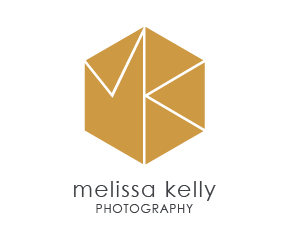ARE THE PROFESSIONAL IMAGES ON YOUR WEBSITE MAKING A GREAT FIRST IMPRESSION?
WHEN A CUSTOMER VISITS YOUR WEBSITE FOR THE FIRST TIME, THEY WILL HAVE A FIRST IMPRESSION OF YOUR BRAND. WHAT DO THE PROFESSIONAL PHOTOS ON YOUR WEBSITE SAY?
There are 1,115,422,029 websites in the world. What are you doing to make your website stand out?
Professional images have the power to elevate your website beyond the rest — if you use them correctly. Keep reading for a guide to using professional photos to make a great first impression.
WHY PROFESSIONAL IMAGES ARE IMPORTANT
Of course images add color and interest to your website while filling up white space, but they can do so much more than that.
Images can increase your page’s readability, brand recognition, and help visitors resonate with your website.
IMAGES SIMPLIFY EXPLANATIONS
Sometimes too much text does more harm than good. This is usually true when showing processes on a website.
For example, a company’s FAQ page might tell the visitor how to add an item to their cart by explaining the buttons they must click to get there. The better company would include images to show the visitor exactly what the process will look like for them as they shop.
We live in a busy world; people don’t have the time to scroll text for something they could learn more quickly through images.
ENTICE YOUR AUDIENCE
If you know your target audience, you should use images that will entice them to visit your site and stay long enough to make a purchase.
If you work in higher education for a university that is known for their outdoor environment, use lush green colors and airy layouts that evoke feelings of being outside.
Just like if most of your audience is made up of male businessmen, you should use images with a dark, sophisticated tone.
If you sell athletic wear, perhaps you include images with action that elude to the outdoors. It’s not just gender you should consider. Also weigh the age group, professions, and interest of your audience when choosing images.
WHAT TO AVOID
Don’t use any old photography for your website. There are certain images that you should resist using for fear of rejecting your target audience.
AVOID STOCK IMAGES
Stock images are great. They’re good quality, don’t cost a lot (sometimes they’re free), and easy to find.
There’s one problem with stock images: People can tell they’re stock images.
Instead of using a photo of smiling students walking to class at any old university, use your students wearing your school’s colors. This is more authentic and visitors will respect the effort.
DON’T USE UNNECESSARY IMAGES
Page speed is more important than ever for search engine optimization. 53% of visitors will leave a site if it takes longer than 3 seconds to load.
If you use images that aren’t relevant to your brand and add nothing to your page, your load time will increase significantly.
If an image doesn’t help convert visitors to loyal customers, scrap it.
PAY ATTENTION TO CONSISTENCY
You can spend a fortune on professional photos, but if they’re not consistent with your brand they are useless.
A good photographer will work with you to capture photos that will resonate with your audience. You need high-quality, professional images that make your website look cohesive and professional.
HOW TO USE PROFESSIONAL IMAGES TO YOUR ADVANTAGE
Now that we’ve talked about what NOT to do, let’s go over how to use images effectively on your website.
You should always make sure your images look their best, don’t slow down your website, and look great on mobile.
ALWAYS USE HIGH-QUALITY PHOTOS
The photos on your website should communicate a message. Part of that message should be that your organization is professional, detailed, and has it all together.
Sometimes this messaging has a bigger impact than your web copy.
That said, high-quality images show visitors what you offer.
Right off the bat, viewers will assign a value to your website, and therefore your entire brand. This is why it’s so important to pay attention to the quality of your images.
Professional quality images are always best because they communicate to your target audience that you hold your business to a certain standard. They convey information that your text can’t do on its own.
ESTABLISH RELEVANCY
We talked about using unnecessary photos before, but what does “unnecessary” mean in this context?
It means don’t use photos that aren’t relevant to your message or brand. You may think a picture is pretty, but that’s not a good enough reason to add it to your website.
Make sure the images you choose speak to your target audience about your products and services. Also, be sure they pertain to your industry.
In the end, images can be a big piece of your brand’s reputation if you use them correctly.
THINK MOBILE, MOBILE, MOBILE
Mobile devices generated 58.3% of the global web traffic in the fourth quarter of 2022.
If a potential customer visits your website and the images are skewed or block the navigation or text, they will leave in an instant.
Why? There are thousands of other options for them to choose from.
Make sure your images pop up quickly and enhance your mobile site, not slow it down.
WHAT DO THE PHOTOS ON YOUR WEBSITE SAY?
Your website is essentially a modern business card. Don’t let poor-quality images deter your visitors from converting to loyal customers.
Melissa Kelly is a Visual Communications Specialist. She creates strategies to support brand development, marketing, and more for higher education entities and non-profit organizations.
We’d love to talk to you about your website and the photos you’re missing. Contact us for professional images you can use to revamp your website.







